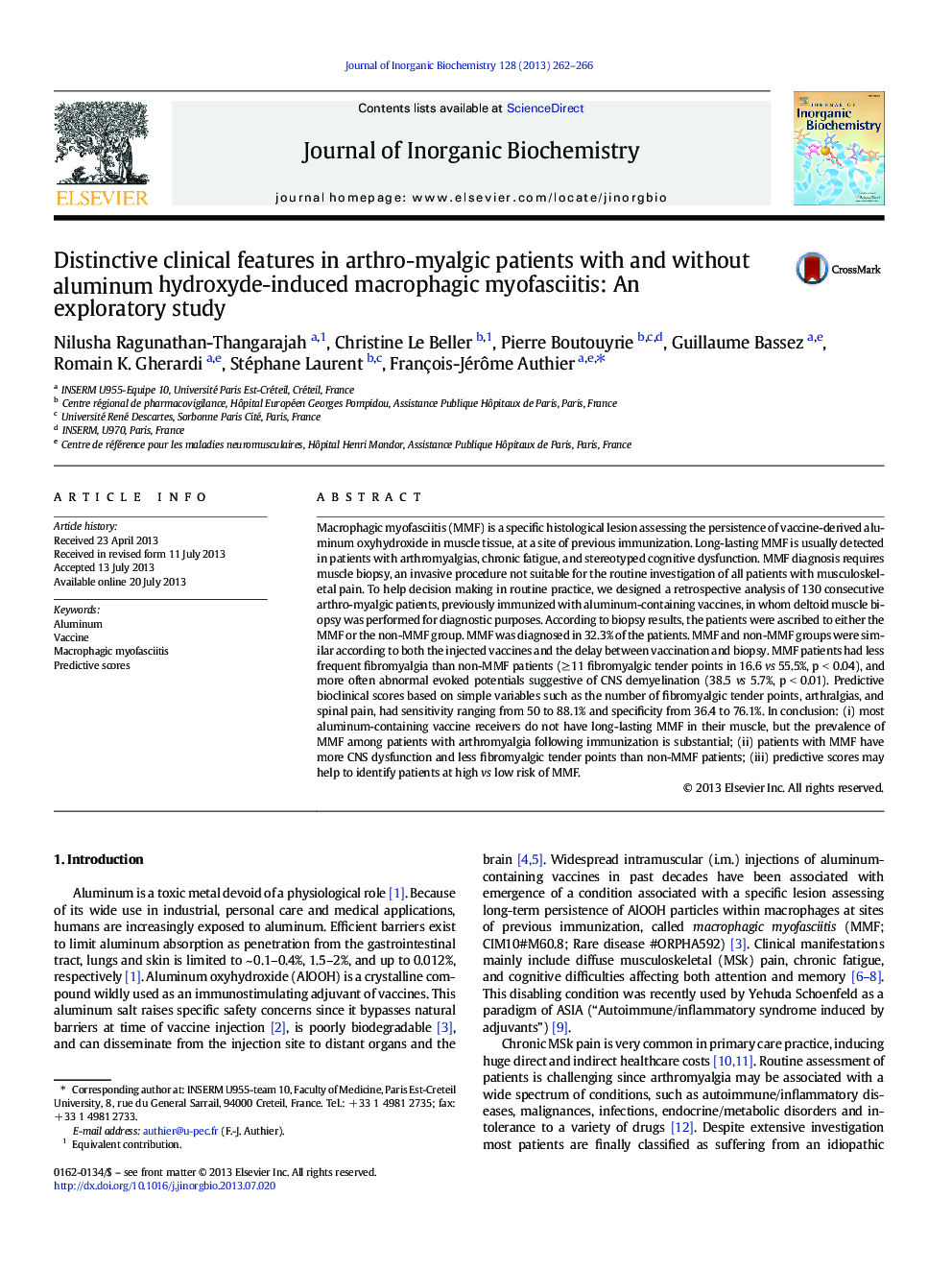| کد مقاله | کد نشریه | سال انتشار | مقاله انگلیسی | نسخه تمام متن |
|---|---|---|---|---|
| 1315976 | 1499459 | 2013 | 5 صفحه PDF | دانلود رایگان |

• Most aluminum hydroxide-containing vaccine receivers do not have long-lasting MMF.
• MMF prevalence among immunized patients with arthromyalgias is substantial.
• Patients with MMF have more CNS dysfunction than non-MMF patients.
• Patients with MMF have less fibromyalgic tender points than non-MMF patients.
• Predictive scores may help to identify patients at high vs low risk of MMF.
Macrophagic myofasciitis (MMF) is a specific histological lesion assessing the persistence of vaccine-derived aluminum oxyhydroxide in muscle tissue, at a site of previous immunization. Long-lasting MMF is usually detected in patients with arthromyalgias, chronic fatigue, and stereotyped cognitive dysfunction. MMF diagnosis requires muscle biopsy, an invasive procedure not suitable for the routine investigation of all patients with musculoskeletal pain. To help decision making in routine practice, we designed a retrospective analysis of 130 consecutive arthro-myalgic patients, previously immunized with aluminum-containing vaccines, in whom deltoid muscle biopsy was performed for diagnostic purposes. According to biopsy results, the patients were ascribed to either the MMF or the non-MMF group. MMF was diagnosed in 32.3% of the patients. MMF and non-MMF groups were similar according to both the injected vaccines and the delay between vaccination and biopsy. MMF patients had less frequent fibromyalgia than non-MMF patients (≥ 11 fibromyalgic tender points in 16.6 vs 55.5%, p < 0.04), and more often abnormal evoked potentials suggestive of CNS demyelination (38.5 vs 5.7%, p < 0.01). Predictive bioclinical scores based on simple variables such as the number of fibromyalgic tender points, arthralgias, and spinal pain, had sensitivity ranging from 50 to 88.1% and specificity from 36.4 to 76.1%. In conclusion: (i) most aluminum-containing vaccine receivers do not have long-lasting MMF in their muscle, but the prevalence of MMF among patients with arthromyalgia following immunization is substantial; (ii) patients with MMF have more CNS dysfunction and less fibromyalgic tender points than non-MMF patients; (iii) predictive scores may help to identify patients at high vs low risk of MMF.
Macrophagic myofasciitis (MMF) is found in 32% of patient with chronic myalgias and previously immunized with aluminum hydroxide-containing vaccines. The presence of tender points is discriminating between MMF and non-MMF patients. Clinical scores are appropriate for classifying patients with chronic myalgias as high risk or low risk for MMF.Figure optionsDownload as PowerPoint slide
Journal: Journal of Inorganic Biochemistry - Volume 128, November 2013, Pages 262–266